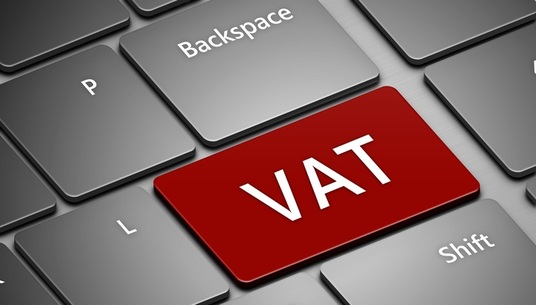BUSINESS
How UK VAT registration process works.

UK VAT Registration is simpler than it is often made out to be, but you need to approach the process step by step and crunch the numbers to figure out the best approach.
HMRC offers three different ways for small businesses with turnover under a certain amount to pay VAT, in addition to the standard way of paying VAT (known as the Standard Rate Scheme).
You can pay your taxes in various ways depending on which of these you choose. The last part of this article discusses them in more detail.
However, the Standard Rate Scheme is what defines VAT, and understanding it isn’t overly complicated.
What is a VAT Registration Number?
A UK VAT registration number is a unique identifier HM Revenue & Customs gives to a company that registers for VAT. The UK VAT number is nine digits long with the prefix GB.
Working with a supplier in a different country of Europe will require you to use its VAT number format. That country has its own specific country code.
Why is this Number Important?
Your HMRC VAT claim will be rejected if you use an invalid VAT code from your supplier to reclaim Value Added Tax. Depending on the situation, you will either have to pay for it or spend time correcting it.
How and where can you find VAT Numbers?
After you register for VAT with HMRC, you’ll receive a certificate confirming your VAT registration number. Use it for all future transactions for your company. This certificate must be kept safe. HM Revenue & Customs offers business accounts that allow you to get the certificate.
The first step to obtaining a business’s VAT number is to examine the invoices it provides to you. VAT-registered companies can easily find their VAT IDs on their invoices if they are registered.
You need to contact a supplier right away if, however, you have paid VAT to them but they have not given you a VAT number. In order to reclaim any VAT you’ve paid, you’ll need a valid VAT ID.
Benefits of UK VAT registration
UK VAT registration means you don’t have to pay VAT on business expenses. In the event that you file a tax return with HMRC, you can reclaim the VAT-inclusive price that was charged to you when you made the purchase.
What do I need to register?
- Taxpayer identifier (Unique Taxpayer Reference – UTR) or National Insurance number (NI)
- Your previous business experiences within the past two years
- Bank account information for your business
You will need to provide sales records if you bought the company.
How to register for VAT
Registration for VAT is easy and free. Simply go to the HMRC website to get started. Click here to register.
Interested in registering for VAT by mail? Download form.
Choosing a VAT accounting scheme
Now that you know how to register for VAT, you can move forward. You will, however, be asked what VAT accounting scheme you will use during the process. Accounting schemes are used by HMRC to determine if you owe or receive VAT.
- In most businesses, VAT is accounted for in the following way: You record the VAT you collect on every sale and pay on every purchase, and you submit a VAT return to HMRC every quarter.
- Accounting for VAT can be done using annual accounting: Some businesses are only required to submit their VAT return once a year, but they are still required to pay it quarterly. Quarterly payment is calculated by using an estimate of your tax return.
- Alternatively, you can join a flat-rate scheme: Small businesses can simply pay a percentage of their turnover as VAT instead of dealing with all the VAT accounting. Whether this makes sense for your business can be determined by an accountant or bookkeeper. On this gov.uk page, you can view flat rates by industry.
Alternatively, you can use a cash accounting scheme: When cash changes hands, it’s assumed that VAT was collected or paid. All other schemes assume you’ve collected or paid VAT the moment you raise an invoice.
Once you’re registered for VAT
- Be sure to include VAT in your prices
- Invoice your customers for VAT
- HMRC needs to receive and process VAT returns
- keep digital VAT records and a VAT account
Why do I need to keep digital records?
You must keep the same records as any VAT-registered business if you have signed up for Making Tax Digital for VAT (all VAT-registered businesses must do this by April 2022). Keeping some of them digitally is the difference. See here for specific details on how digital records must be maintained by businesses registered with MTD.
Making Tax Digital must be followed. If your records are not in order, HMRC may visit your business and charge a penalty.
How do I keep digital records?
- Keeping records of sales and purchases is essential
- Maintain a separate VAT account (also known as a VAT account)
- Ensure that VAT invoices are issued correctly
The records must be:
- For at least six years (or ten years if you used VAT MOSS services)
- Complete, accurate, and readable
In the chapter How to file your VAT return through Making Tax Digital, you can learn more about Making Tax Digital and who needs to register.
Please Note: Zero does not provide accounting, tax, business, or legal advice. This guide is provided solely for informational purposes. Before taking any action regarding any of the content provided, you should seek advice from your own professional advisors.

-

 MORE3 months ago
MORE3 months agoKatie Cherkasky: A Trailblazer in Military and Civil Rights Law
-

 BUSINESS3 months ago
BUSINESS3 months agoDecomm: Mastering The Final Stage of Tech Lifecycles
-

 MORE3 months ago
MORE3 months agoLeona Kimes: From Hillsong Pastor to Advocate for Change
-

 MORE3 months ago
MORE3 months agoGreg Kriek: South Africa’s Rising Star in Global Cinema